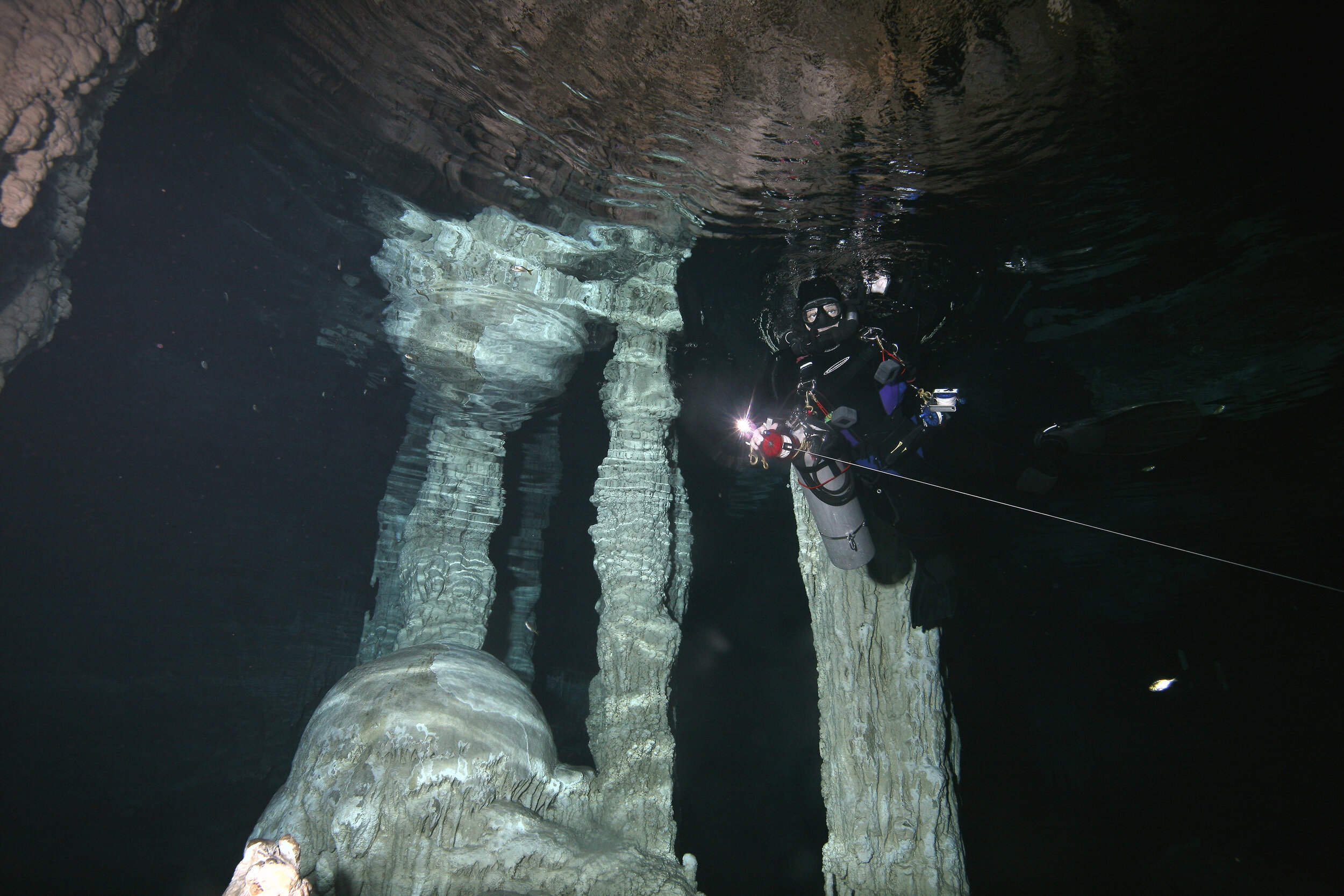
Workshops
Advanced Wreck-Diving and Technical Gear Configurations
Gary gave his first lecture on advanced wreck diving techniques in 1978. Over the years, as techniques and gear configurations evolved, he expanded and refined his program to include all aspects of the activity. He has published articles on the various disciplines, and wrote the first book that dealt exclusively with the subject of wreck-diving: the Advanced Wreck Diving Guide (Cornell Maritime Press, 1988). The book now serves as the basis for the first three components of the seminar. What began as a series of individual lectures developed into the format of a half-day workshop.
This combination seminar is geared for the diver who wants to extend his knowledge of diving beyond that which is obtainable from certifying agencies. It includes the topics Deep Diving, Wreck Penetration, Decompression Diving, and Technical Gear Configurations. This quadruplet of lectures is interconnected by methodology and by the kind of gear required. In the order presented, each segment builds upon the material that is covered in the previous, giving the student a well-rounded picture of the skills and equipment necessary to engage safely in the activity of wreck-diving.
Even divers who do not intend to dive deep, stay long, explore the inside of wrecks, or engage in intentional decompression, will find the workshop a valuable experience. The positive educational outlook, as opposed to negatively reinforced ignorance, inculcates individual awareness of the opportunities available as well as the risks involved in acquiring such proficiencies. Advanced wreck-diving is not for everyone, but the knowledge of such techniques is. Only a diver armed with the proper information can make an intelligent decision about the course that is best for him to take.
Because space-age spin-off hardware, coupled with developing techniques and their utilization in deep-water, is forever changing the realm of diving, this workshop includes an introduction to technical diving. The tech in technical stands for technique and technology: esoteric knowledge in the use of state-of-the-art equipment.
This is very much a nuts and bolts workshop. Emphasis is placed on gear configurations rather than theory and physiology. Using slides as visual aids, the student will see how todays technical divers are gearing up - not necessarily so he can dive to 300 feet on mixed gas, but so he can familiarize himself with the techniques, and apply them to his own diving regimen.
The basis for the fourth component of the workshop is Gary's Technical Diving Handbook. The seminar draws on the authors experience in all realms of underwater exploration. This lecture is for those who desire to expand their sphere of knowledge and learn new skills, who want to become a part of the fast evolving world of practiced adventure diving, who seek new challenges, and who are willing to grasp alternative concepts and gear configurations. This is next-generation stuff that is guaranteed to broaden the horizons of even the most experienced wreck-diver.
Enlightenment is only a few hours away.
The Mechanics of Shipwreck Photography
Successful shipwreck photography is more of a science than an art, more of a skill than a craft, and more work than fun. It requires drive and dedication. But the potential reward can make it all worthwhile.
This workshop encompasses the basics of underwater photography from a practical point of view. If you're looking for a course on optics, the physics of light, or formulas for calculating strobe output in lumens - go elsewhere. Here we will cover only those aspects of underwater photography that help to produce useful underwater images. Topics of discussion include the selection of cameras, lenses, film, and strobes; the advantages and disadvantages of each; and techniques that take into account the special environment that shipwrecks create, with emphasis on silt and low-light conditions.
We will compare housed cameras to amphibious cameras, the view finder to the single lens reflex, telephoto lenses to wide angle lenses, fast film to slow film, small strobes to large strobes, and manual exposure to through-the-lens metering. We will discuss the ways to set up a camera and strobe as a system, how to prepare your equipment for submergence, and how care for your equipment after a dive. We will discuss methods of carrying your camera so you don't lose it.
Then we will get into the special conditions that apply only to shipwrecks, such as how to carry a camera and a light during wreck penetration. And how to avoid silt and reduce backscatter inside. And how to shoot quickly and bracket your shots without the time-consuming method of changing apertures or F-stops.
If you have any ambition to become a shipwreck photographer, then you will want to take advice from one who has been successful at it for years. This workshop can help you to achieve that ambition.


